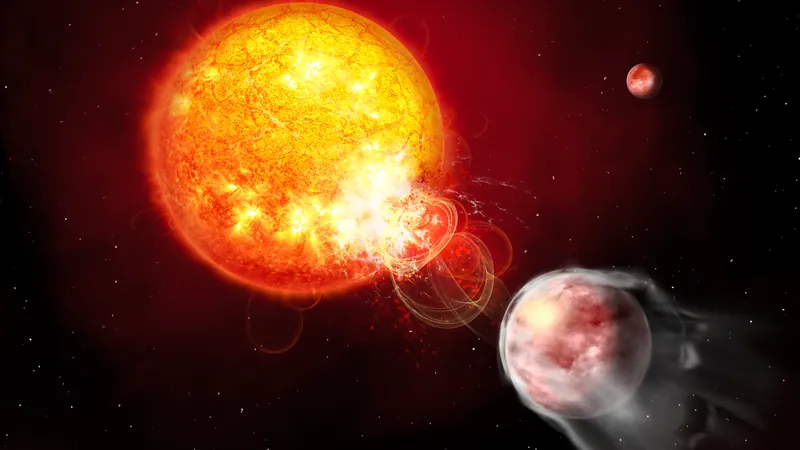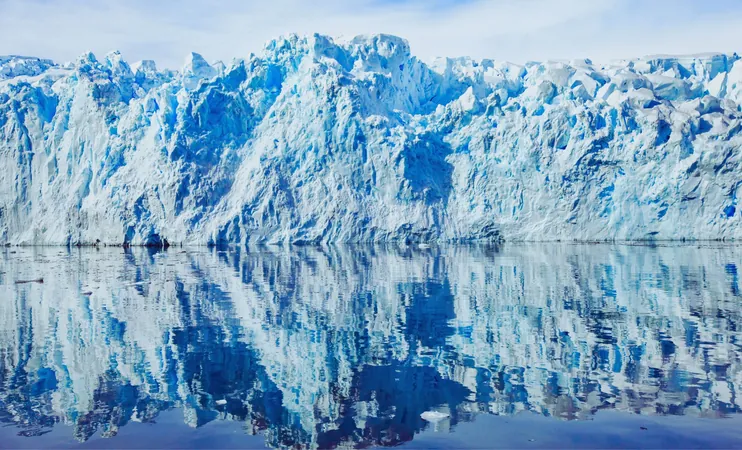
Hubble Telescope Unveils the Dynamic Life of Protostars in the Orion Nebula!
2025-01-17
Author: Ming
NASA and ESA have released a stunning image captured by the Hubble Space Telescope, offering a breathtaking glimpse into the heart of the Orion Nebula, the closest massive star-forming region to Earth, located just 1,500 light-years away. This celestial wonder, also known as Messier 42 (M42), is easily visible to the naked eye, just south of the three distinctive stars that form Orion's "belt."
The image focuses on two fascinating young stars, HOPS 150 and HOPS 153—protostars at different stages of their developmental journey. These protostars received their names from the Herschel Orion Protostar Survey, a pioneering project conducted using ESA's Herschel Space Observatory.
In the upper-right corner of the image, we find HOPS 150, a captivating binary star system where two young protostars orbit each other, each surrounded by a small, dusty disk. This material is drawn into the stars, fueling their growth as they transition from protostars to mature stars.
Intriguingly, a massive cloud of gas and dust, over 2,000 times wider than the distance from Earth to the Sun, is depicted in the image, cutting across the luminous glow of HOPS 150. The levels of infrared light emitted by this protostar suggest that it is well on its way to becoming a fully developed star.
Meanwhile, extending across the left side of the image is a beautiful, colorful outflow known as a jet. This jet originates from HOPS 153, a younger protostar situated outside the image frame. HOPS 153 is still encased in its birth nebula, enveloped by cold, dense gas, making it invisible to Hubble's observations. However, the jet it emits is a striking spectacle, visibly colliding with the surrounding gases and dust of the Orion Nebula.
The activity observed in these protostars is a crucial process in our understanding of how stars form and significantly shape their environments. As they evolve, protostars like HOPS 150 and HOPS 153 play integral roles in the dynamics of their stellar nurseries, influencing the formation of future star systems.
Explore the wonders of the cosmos with us as we continue to reveal the mysteries of star formation and the breathtaking beauty of our universe!




 Brasil (PT)
Brasil (PT)
 Canada (EN)
Canada (EN)
 Chile (ES)
Chile (ES)
 Česko (CS)
Česko (CS)
 대한민국 (KO)
대한민국 (KO)
 España (ES)
España (ES)
 France (FR)
France (FR)
 Hong Kong (EN)
Hong Kong (EN)
 Italia (IT)
Italia (IT)
 日本 (JA)
日本 (JA)
 Magyarország (HU)
Magyarország (HU)
 Norge (NO)
Norge (NO)
 Polska (PL)
Polska (PL)
 Schweiz (DE)
Schweiz (DE)
 Singapore (EN)
Singapore (EN)
 Sverige (SV)
Sverige (SV)
 Suomi (FI)
Suomi (FI)
 Türkiye (TR)
Türkiye (TR)
 الإمارات العربية المتحدة (AR)
الإمارات العربية المتحدة (AR)